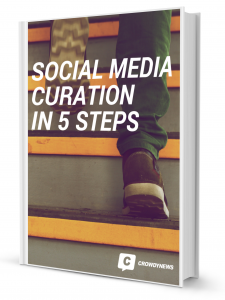In today’s social media world, breaking news is everywhere. Editors monitor social media and bring breaking stories to their readers by using multiple social media sources. Because that’s what readers desire: get the facts they need from trusted sources, on every device— fast.
News gathering and reporting has changed: typewriters have been replaced by computers; telephone-based tips have been replaced by Tweets and Facebook posts; data validation & fact checking is streamlined thanks to the internet; reporters can be their own cameraman with the smartphones in their hands. Compared to the old days, newsrooms have fewer financial resources, less time to conduct research: a lot has changed in how research is done today. Staff takes on multiple tasks, where they used to only focus on one specific aspect of journalism. Powered by these changes, news has become a 24 hours a day business; immediate; available on all platforms; including mobile. And on social media.

All big news organizations are diving into the world of social media, looking at its extraordinary newsgathering potential, its potential as a tool to engage the audience, and as a way of distributing our news. At Chicago Tribune for example, the social media editor starts early in the morning skimming all social media for news. Social media editors have to think ahead, dreaming up ideas for how to best engage the publication’s audience. Another great example of the use of social media in a newsroom is at Vice. They have an engagement team of six people focusing solely on social. The team is responsible for helping to create headlines, and also generating ideas for articles based on what they see on social during the day. The Vox engagement team really puts social as a source to practice.
3 Key Roles Social Media Plays in Journalism
Social media currently has three key, highly valuable roles in journalism:
- Newsgathering – it helps us gather more, and sometimes better, material; we can find a wider ranges of voices, ideas and eyewitnesses quickly
- Audience engagement – how we listen to and talk to our audiences, and allowing us to speak to different audiences – and
- A platform for content distribution – it’s a way of getting journalism out into the world, in short form or as a tool to take people to journalism on a publisher’s website, on TV or on the radio. It allows editors to engage differently and with younger audiences.
In the end there always remains an appetite for journalism that is based on the following values: truth, accuracy, integrity, verification, independence, and nowadays: speed. Social media adds, among other things, a speed value. Recent research from Crowdynews also shows that readability and credibility of an article increases when adding relevant social media content from multiple sources to it.
With social media curation tools you’ll be able to monitor social media for trending content -what’s happening right now-, to leverage social posts to flesh out stories and more. You first need to understand what topics your target audience is sharing, re-sharing, and commenting on. After that you start building a list of topics & keywords, based on your research and then you define the user experience(s) you want to deliver.

Want to know how you can easily add relevant social media to your editorial articles?
Download the eBook: 5 Steps to Social Media Curation for free!